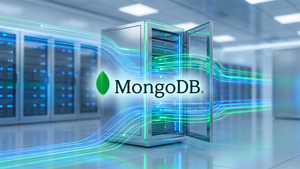
The global semiconductor industry, the undisputed engine of modern technology and the very bedrock of artificial intelligence, finds itself at the epicenter of an unprecedented geopolitical storm. As of October 2025, a rapid and costly restructuring is underway, driven by an accelerating shift towards "techno-nationalism" and intensified strategic competition, primarily between the United States and China. This environment has transformed semiconductors from mere commercial goods into critical strategic assets, leading to significant supply chain fragmentation, increased production costs, and a profound re-evaluation of global technological dependencies. The immediate significance is a world grappling with the delicate balance between economic efficiency and national security, with the future of AI innovation hanging in the balance.
The Intricate Dance of Silicon and Statecraft: Technical Chokepoints Under Pressure
Semiconductor manufacturing is a marvel of human ingenuity, an incredibly complex, multi-stage process that transforms raw silicon into the sophisticated integrated circuits powering everything from smartphones to advanced AI systems. This intricate dance, typically spanning several months, is now facing unprecedented geopolitical pressures, fundamentally altering its technical underpinnings.
The process begins with the meticulous purification of silicon into polysilicon, grown into ingots, and then sliced into ultra-pure wafers. These wafers undergo a series of precise steps: oxidation, photolithography (patterning using highly advanced Deep Ultraviolet (DUV) or Extreme Ultraviolet (EUV) light), etching, deposition of various materials, ion implantation (doping), and metallization for interconnections. Each stage demands specialized equipment, materials, and expertise.
Critical chokepoints in this globally interdependent supply chain are now targets of strategic competition. Electronic Design Automation (EDA) software, essential for chip design, is dominated by the United States, holding a near-monopoly. Similarly, advanced manufacturing equipment is highly concentrated: ASML (AMS: ASML), a Dutch company, holds a near-monopoly on EUV lithography machines, indispensable for cutting-edge chips (below 7nm). Japanese firms like Screen and Tokyo Electron control 96% of resist processing tools. Furthermore, Taiwan Semiconductor Manufacturing Company (TSMC) (NYSE: TSM) accounts for over 90% of the world's most advanced chip manufacturing capacity, making Taiwan an indispensable "silicon shield."
Geopolitical factors are technically impacting these stages through stringent export controls. The U.S. has continuously tightened restrictions on advanced semiconductors and manufacturing equipment to China, aiming to curb its military modernization and AI advancements. These controls directly hinder China's ability to acquire EUV and advanced DUV lithography machines, deposition tools, and etching equipment necessary for next-generation processes. The Netherlands, aligning with U.S. policy, has expanded export restrictions on DUV immersion lithography systems, further reinforcing this technical blockade. China has retaliated by weaponizing its control over critical raw materials like gallium and germanium, essential for semiconductor manufacturing, highlighting the vulnerability of material supplies. This deliberate, state-led effort to strategically decouple and control technology flows fundamentally differs from historical supply chain disruptions, which were largely unintended shocks from natural disasters or economic downturns. The current landscape is a proactive strategy centered on national security and technological dominance, rather than reactive problem-solving.
The AI Industry's New Reality: Navigating a Fragmented Silicon Future
The geopolitical reshaping of the semiconductor supply chain casts a long shadow over the AI industry, creating both significant vulnerabilities and strategic opportunities for tech giants, AI labs, and nimble startups alike. As of late 2025, the "AI supercycle" continues to drive unprecedented demand for cutting-edge AI chips—Graphics Processing Units (GPUs), Application-Specific Integrated Circuits (ASICs), and High Bandwidth Memory (HBM)—making access to these components a paramount concern.
Tech giants like NVIDIA (NASDAQ: NVDA), AMD (NASDAQ: AMD), Intel (NASDAQ: INTC), Google (NASDAQ: GOOGL), Microsoft (NASDAQ: MSFT), and Amazon (NASDAQ: AMZN) are locked in an intense battle for a limited pool of AI and semiconductor engineering talent, driving up wages and compensation packages. Many are investing heavily in AI-optimized chips and advanced packaging, with some, like Apple (NASDAQ: AAPL), Google, Microsoft, and Amazon Web Services, increasingly designing their own custom silicon to mitigate supply chain risks and optimize for specific AI workloads. This strategic shift reduces reliance on external foundries and offers a significant competitive differentiator.
However, companies heavily reliant on globalized supply chains, especially those with significant operations or sales in both the U.S. and China, face immense pressure. Chinese tech giants such as Baidu (NASDAQ: BIDU), Tencent (HKG: 0700), and Alibaba (NYSE: BABA) are particularly vulnerable to stringent U.S. export controls on advanced AI chips and manufacturing equipment. This limits their access to crucial technologies, slows their AI roadmaps, increases costs, and risks falling behind U.S. rivals. Conversely, companies like NVIDIA, with its indispensable GPUs and CUDA platform, continue to solidify their position as AI hardware kingpins, with its Blackwell AI chips reportedly sold out for 2025. TSMC, as the leading advanced foundry, also benefits immensely from sustained demand but is simultaneously diversifying its footprint to manage geopolitical risks.
The competitive implications are profound. The global semiconductor ecosystem is fracturing into regionally anchored supply networks, where national security dictates location strategy. This could lead to a bifurcation of AI development, with distinct technological ecosystems emerging, potentially making certain advanced AI hardware available only in specific regions. This also drives the development of divergent AI architectures, with Chinese models optimized for domestic chips (e.g., Cambricon, Horizon Robotics) and Western companies refining platforms from NVIDIA, AMD, and Intel. The result is potential delays in product development, increased costs due to tariffs and duplicated infrastructure, and operational bottlenecks from supply chain immaturity. Ultimately, the ability to secure domestic manufacturing capabilities and invest in in-house chip design will provide significant strategic advantages in this new, fragmented silicon future.
Beyond the Boardroom: Broader Implications for Innovation, Security, and Stability
The geopolitical tensions surrounding semiconductor supply chains extend far beyond corporate balance sheets, casting a long shadow over global innovation, national security, and economic stability. This pivotal shift from an economically optimized global supply chain to one driven by national security marks a profound departure from past norms.
This era of "techno-nationalism" sees nations prioritizing domestic technological self-sufficiency over global efficiency, recognizing that control over advanced chips is foundational for future economic growth and national security. Semiconductors are now seen as strategic assets, akin to oil in the 20th century, becoming a new frontier in the global power struggle. This is particularly evident in the AI landscape, where access to cutting-edge chips directly impacts a nation's AI capabilities, making it a critical component of military and economic power. The AI chip market, projected to exceed $150 billion in 2025, underscores this strategic imperative.
Concerns for innovation are significant. Reduced international collaboration, market fragmentation, and potentially incompatible AI hardware and software ecosystems could hinder the universal deployment and scaling of AI solutions, potentially slowing overall technological progress. Increased R&D costs from regionalized production, coupled with a severe global shortage of skilled workers (projected to need over one million additional professionals by 2030), further threaten to impede innovation. For national security, reliance on foreign supply chains for critical components poses significant risks, potentially compromising military capabilities and intelligence. The concentration of advanced manufacturing in Taiwan, given regional geopolitical tensions, creates a critical vulnerability; any disruption to TSMC's operations would trigger catastrophic global ripple effects.
Economically, reshoring efforts and duplicated supply chains lead to significantly higher production costs (e.g., U.S.-made chips could be 50% more expensive than those from Taiwan), translating to higher prices for consumers and businesses. This contributes to widespread supply chain disruptions, impacting industries from automotive to consumer electronics, leading to production delays and market volatility. This "chip war" is explicitly likened to historical arms races, such as the Cold War space race or the nuclear arms race, but with technology as the central battleground. Just as oil defined 20th-century geopolitics, silicon defines the 21st, making advanced chip fabs the "new nuclear weapons." The escalating U.S.-China rivalry is leading to the emergence of distinct, parallel technological ecosystems, reminiscent of the ideological and technological divisions during the Cold War, risking a "splinter-chip" world with incompatible technical standards.
The Horizon of Silicon: Future Developments and Enduring Challenges
The geopolitical restructuring of the semiconductor supply chain is not a fleeting phenomenon but a trajectory that will define the industry for decades to come. In the near-term (2025-2027), expect continued massive investments in regional manufacturing, particularly in the U.S. (via the CHIPS and Science Act, spurring over $540 billion in private investments by 2032) and Europe (through the EU Chips Act, mobilizing €43 billion). These initiatives aim to reduce reliance on East Asia, while Taiwan, despite diversifying, will continue to produce the vast majority of advanced chips. The U.S.-China tech war will intensify, with further export restrictions and China's accelerated drive for self-sufficiency.
Long-term (beyond 2027), experts predict a permanently regionalized and fragmented supply chain, leading to distinct technological ecosystems and potentially higher production costs due to duplicated efforts. "Techno-nationalism" will remain a guiding principle, with nations prioritizing strategic autonomy. AI's insatiable demand for specialized chips will continue to be the primary market driver, making access to these components a critical aspect of national power.
New semiconductor strategies like reshoring and diversification are designed to bolster national security, ensuring a secure supply of components for defense systems and advanced AI for military applications. They also promise significant economic development and job creation in host countries, fostering innovation leadership in next-generation technologies like 5G/6G, quantum computing, and advanced packaging. "Friend-shoring," where allied nations collaborate to leverage specialization, will become more prevalent, enhancing overall supply chain resilience.
However, significant challenges persist. The immense capital expenditure required for new fabrication plants (e.g., Intel's (NASDAQ: INTC) proposed €33 billion factory in Magdeburg, Germany) is a major hurdle. The severe and persistent global shortage of skilled labor—engineers, designers, and technicians—threatens to impede these ambitious plans, with the U.S. alone facing a deficit of 59,000 to 146,000 workers by 2029. Economic inefficiencies from moving away from a globally optimized model will likely lead to higher costs. Furthermore, the technological hurdles of advanced manufacturing (3nm and below processes) remain formidable, currently dominated by a few players like TSMC and Samsung (KRX: 005930). Experts predict a continued "de-risking" rather than complete decoupling, with market growth driven by AI and emerging technologies. The industry will increasingly adopt AI-driven analytics and automation for supply chain management and production optimization.
The Dawn of a New Silicon Era: A Comprehensive Wrap-Up
The geopolitical impact on global semiconductor supply chains marks a watershed moment in technological history. As of October 2025, the industry has irrevocably shifted from a purely economically optimized model to one dominated by national security imperatives and techno-nationalism. The intensifying U.S.-China rivalry has acted as the primary catalyst, leading to aggressive export controls, retaliatory measures, and a global scramble for domestic and allied manufacturing capabilities through initiatives like the U.S. CHIPS Act and the EU Chips Act. Taiwan, home to TSMC, remains a critical yet vulnerable linchpin, prompting its own strategic diversification efforts.
The significance of these developments for the tech industry and global economy cannot be overstated. For the tech industry, it means higher production costs, increased operational complexity, and a fundamental reshaping of R&D and manufacturing decisions. While AI continues to drive unprecedented demand for advanced chips, the underlying geopolitical fragility poses a substantial risk to its future development. For the global economy, this shift signals a move towards a more fragmented and regionalized trade environment, potentially leading to higher consumer prices and a slowdown in global innovation. The ability to develop advanced AI for defense and other strategic applications is now inextricably linked to secure semiconductor supply, making it a paramount national security concern.
Looking ahead, the long-term impact points toward a fundamentally transformed, more regionalized, and likely costlier semiconductor industry. Experts predict the emergence of two parallel AI ecosystems—a U.S.-led system and a China-led system—intensifying what many are calling the "AI Cold War." While this introduces inefficiencies, the aim is to build greater resilience against single points of failure and achieve enhanced national security and technological sovereignty.
In the coming weeks and months, critical developments to watch include further tightening of U.S. export controls and China's accelerated domestic production efforts. The evolution of U.S.-China relations, including any diplomatic efforts or retaliatory measures, will be closely scrutinized. The operational efficiencies and ramp-up timelines of new fabrication plants in the U.S., Europe, and Japan will offer crucial insights into the success of reshoring efforts. Finally, market dynamics related to AI chip demand and the impact of rising production costs on chip prices and innovation cycles will provide a barometer for the tech industry's navigation of this new, geopolitically charged silicon era.
This content is intended for informational purposes only and represents analysis of current AI developments.
TokenRing AI delivers enterprise-grade solutions for multi-agent AI workflow orchestration, AI-powered development tools, and seamless remote collaboration platforms. For more information, visit https://www.tokenring.ai/.






